 Encouraged by the words of the Snow Country Prince, Mariko and Kazuo nurse an injured swan back to health during the long winter.
Encouraged by the words of the Snow Country Prince, Mariko and Kazuo nurse an injured swan back to health during the long winter.
Japan
Materials from Japan
Ano hi no koto : Remember March 11,2011
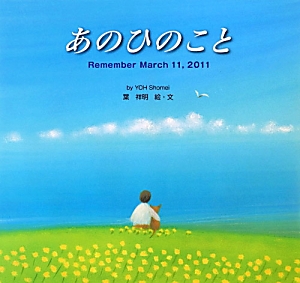
Ano Hi no Koto (The Things That Happened on That Day): Remember March 11, 2011 (2012), is a Japanese-English bilingual picture book. Through a boy’s perspective, the story invites readers to see the catastrophic earthquake and tsunami that happened on March 11, 2011 in the northeastern region of Japan. The central theme of this story is loss of family, linking with the motifs of separation, social isolation, survival, and hope.
See the review at WOW Review, Volume VI, Issue 3
The Long, Long Line
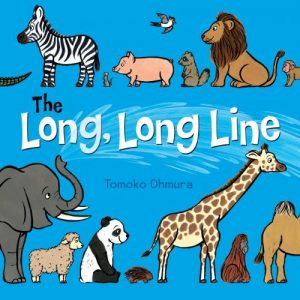 Come one, come all! If you love excitement and fun, step right up and join the line! Usually the ride itself is more fun than the lineup, but for these fifty animals, anticipation is part of the fun. Each animal is clearly numbered and named and readers will delight in counting the animals and choosing their favorites.
Come one, come all! If you love excitement and fun, step right up and join the line! Usually the ride itself is more fun than the lineup, but for these fifty animals, anticipation is part of the fun. Each animal is clearly numbered and named and readers will delight in counting the animals and choosing their favorites.
Finally, it’s time to board the ride! Through a revealing gatefold spread, readers discover the ride is a giant whale roller coaster! As the whale spins, dips, dives, and splashes, all the animals have too much fun. When the ride ends, the animals can’t wait to line up again.
Shigeru no Kachan (Shigeru’s Mom)
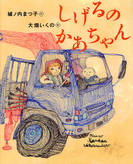
Shigeru’s mother, single mother, is a truck driver. Sigeru is proud of his mother because she can do anything that seems difficult for women.
Rude Stories
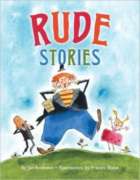
A collection of international stories–originating from such places as Japan, Canada, Africa and Eastern Europe–all share a sense of irreverence and a taste for bodily functions, loud noises, and bad manners.
The Wakame Gatherers
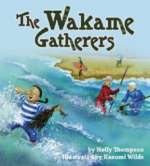
When Nanami’s Gram from Maine visits Japan, Nanami’s Japanese grandmother, Baachan, takes them to the seashore to gather wakame seaweed. Includes several recipes for wakame.
Featured in Volume VI, Issue 1 of WOW Review.
Samurai Kids #1: White Crane
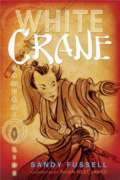
Even though he has only one leg, Niya Moto is studying to be a samurai, and his five fellow-students are similarly burdened, but sensei Ki-Yaga, an ancient but legendary warrior, teaches them not only physical skills but mental and spiritual ones as well, so that they are well-equipped to face their most formidable opponents at the annual Samurai Games.
See the review at WOW Review Volume 5, Issue 4
Blood Ninja III
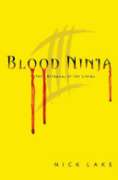
The fate of feudal Japan hangs in the balance in this bloody conclusion to the epic trilogy. Taro is at a crossroads: He has vanquished Lord Oda for good, but with no land and no title, he has no hope of marrying Hana, the daughter of a daimyo. So when Taro receives news of a murderous dragon and the large reward for killing it, he and his friends find themselves on a dangerous quest to slay the beast. Their mission has the potential to save the people of Japan—but failure will result in the deaths of thousands. And dragons are not the only monsters they will encounter: The dead, led by the odious Kenji Kira, have begun to rise, and they have Taro in their sights. In this heart-stopping conclusion to the Blood Ninja trilogy, the future of all feudal Japan is in danger, and everything Taro holds dear will be threatened. But it is the betrayal of flesh and blood—his own flesh and blood—that may be his ultimate undoing.
Spirit’s Chosen
As Himiko traverses ancient Japan in order to free enslaved members of her clan, she encounters members of many other tribes and emerges as the leader who will unify them.
Nobody Knows
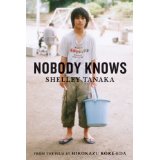
It’s autumn in Tokyo, and twelve-year-old Akira and his younger siblings, Kyoko, Shige and little Yuki, have just moved into a new apartment with their mother. Akira hopes it’s a new start for all of them, even though the little ones are not allowed to leave the apartment or make any noise, since the landlord doesn’t permit young children in the building. But their mother soon begins to spend more and more time away from the apartment, and then one morning Akira finds an envelope of money and a note. She has gone away with her new boyfriend for a while. Akira bravely shoulders the responsibility for the family. He shops and cooks and pays the bills, while Kyoko does the laundry. The children spend their time watching TV, drawing and playing games, wishing they could go to school and have friends like everyone else. Then one morning their mother breezes in with gifts for everyone, but she is soon gone again. Months pass, until one spring day Akira decides they have been prisoners in the apartment long enough. For a brief time the children bask in their freedom. They shop, explore, plant a little balcony garden, have the playground to themselves. Even when the bank account is empty and the utilities are turned off and the children become increasingly ill-kempt, it seems that they have been hiding for nothing. In the bustling big city, nobody notices them. It’s as if nobody knows. But by August the city is sweltering, and the children are too malnourished and exhausted even to go out. Akira is afraid to contact child welfare, remembering the last time the authorities intervened, and the family was split up. Eventually even he can’t hold it together any more, and then one day tragedy strikes…
